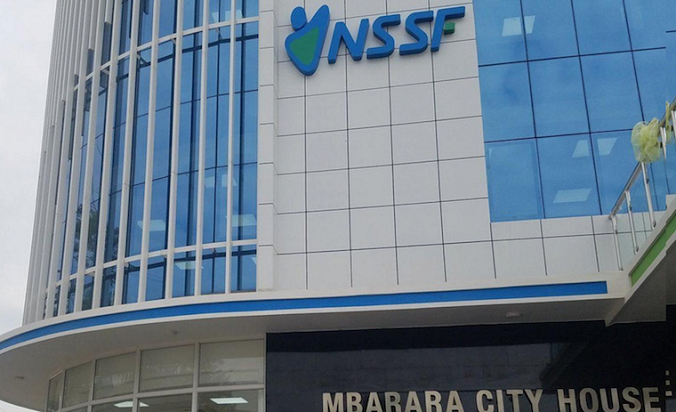The National Social Security Fund has warned that their investments projects, especially in real estate will slow down from the pace that was exhibited in the previous year, due to the dwindling of its cash reserves.
The Fund’s cash availability has reportedly been affected by the implementation of the Mid-term Access to Benefits, that started earlier this year.
In March, NSSF said it had set aside 1 trillion shillings for the scheme and that it expected to disburse 50 billion shillings per week. By the end of the first three months at the end of June, a total of 421 billion shillings had been paid out to at least 21,600 beneficiaries.
The Managing Director, Richard Byarugaba said that this meant they still had adequate funds to meet all applications.
Real estate accounts for between 6 and 10 percent of the Fund’s total assets, with the bulk of the investment portfolio being in the financial markets in Uganda and East Africa.
Ongoing construction projects include the Lubowa Solana Housing project, an upmarket estate along Entebbe Road, Kyanja Off-taker project in Kira Municipality and the Temangalo Low-cost housing estate.
Byarugaba says the Fund no longer has the kind of liquidity it had before the Min-term Access that allows the beneficiaries who are 45 years or older and have saved for a total of 120 months, to access their benefits.
He however says that with innovation in construction and procurement, the cost can be tamed.
Speaking at the 6th NSSF Suppliers Forum, Byarugaba did not explain the extent to which the projects would be affected.
The annual forums are called to explain the available opportunities for the next year for supplies of goods, services and construction works.
They are also aimed at seeking ways of improving services between the two sides which in the end targets better services for the NSSF savers. One of the perennially raised issues is access to low-cost housing.
Byarugaba says that they are trying to ensure the houses, at least for the low-end customers are more affordable than they are currently. These cost a buyer between 120 and 150 million shillings each, while the high-end units go for 650 million.
According to NSSF, the main drivers of the cost of housing in and around Kampala include land which is considered overvalued, amenities in and around the estates like ‘quality roads’, water, telecommunication and security installations.
Byarugaba says when NSSF identifies land for purchase, the sellers usually inflate the price. He says the suppliers and contractors are the ones who can have a solution to bringing the costs of the final product lower.
It is feared that the rising cost of the building materials like cement and steel products, as well as the expensive fuel to power plants and machinery, could further push the costs up.
The fund plans to spend almost 600 billion shillings over the next one year on supplies for goods, services and construction services, with 547 billion going into real estate.
At least 21 billion shillings will go into the procurement of ICT systems and computer equipment, while 2.4 billion is meant for furniture, fittings and office equipment and 510 million shillings for cars.
Gerald Mugabi, the Head of Procurement at NSSF said that unfortunately, while there are 90 percent Ugandan companies involved in the supplies to NSSF, they take only 10 percent of the value, on top of low-quality jobs, while the rest goes to the few international firms. He attributed this to lack of capital, and urged them to form joint ventures with foreign ones, but that the latter find it hard to work with them.
Mugabi stressed the need for the private sector to work on confidence and trust building so that they can be attractive to foreigners for joint ventures.
He however added that even simple skills like preparing bid documents are lacking among Ugandans.
He says that while there are policies that support local firms to access the opportunities, sometimes foreign companies are handled more favorably at the expense of local ones.
-URN





